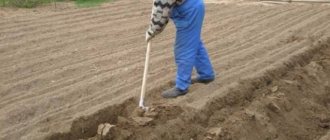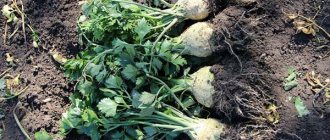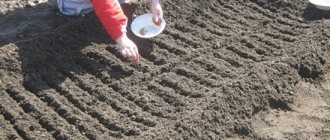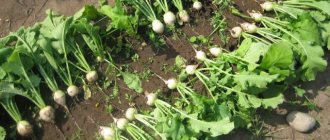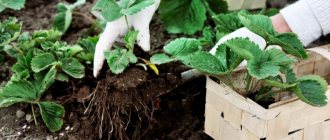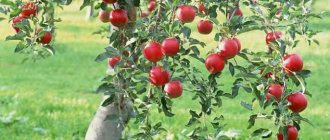Potatoes are an undemanding crop, but its cultivation cannot be taken lightly. Tillage is the basis for good crop development and saves money and labor in the summer.
On properly treated soils, productivity increases by 20-30%. This is a very significant increase, especially for small areas. Plants get sick less and form smooth and healthy tubers.
Why is soil tillage necessary for potatoes?
Potatoes are not as demanding on the physical properties of the soil as other vegetable crops. With appropriate agricultural technology, it can be grown in almost any type of soil. But before that they should be carefully prepared.
Tillage solves a lot of problems:
- increases the moisture and air capacity of the earth;
- eliminates compaction in the tuber formation zone;
- reduces the supply of infections;
- reduces the number of weeds without the use of chemicals;
- ensures uniform distribution of fertilizers in the root layer;
- promotes the formation of humus;
- creates optimal conditions for mechanical harvesting of potatoes.
All this leads to a qualitative and quantitative increase in yield. Additionally, it reduces labor intensity during the growing season and the risk of dangerous infectious diseases. The only disadvantage of soil cultivation is the high cost of physical labor or payment of contractors with equipment.
On untreated or poorly treated soil, the yield is significantly reduced, tubers form slowly, and all conditions are created for the development of infections. Additionally, this entails wear and tear on equipment, and large expenditures of resources and money.
How to dig potatoes
There are several ways to dig up potatoes. To do this, they often use either ordinary gardening tools - a shovel or a pitchfork, or special agricultural equipment.
At the same time, digging by hand is a rather labor-intensive process, especially for those who have health problems. To cultivate large areas, it is better to use a walk-behind tractor.
Digging by hand is a very labor-intensive process.
Motoblock
Harvesting with agricultural equipment can be carried out after all the tops on the site have been cut off. After 2-3 days, you can begin to dig up the root crop.
The equipment is prepared in advance. To do this, it is recommended to pay attention to the rotation elements. They need to be thoroughly lubricated with special oil, and the parts of the walk-behind tractor that will loosen the soil should be cleaned of soil, clay, and stones.
If the blades become dull, they must first be sharpened.
Using a walk-behind tractor or digging with a walk-behind cultivator requires following the instructions:
- shrubs should be planted in advance in one even row so that equipment does not have to be maneuvered throughout the entire area;
- the distance between the rows should be 70-80 cm so that the walk-behind tractor does not damage the neighboring ridge with its wheels;
- when harvesting, it is better to use additional attachments to regulate the depth;
- you need to adjust the equipment in advance so that it digs easily;
- In order for the wheels of the walk-behind tractor to move evenly, it is recommended to dig up potatoes through a ridge.
Manually
You can dig potatoes manually with a shovel or a digger. However, such work is suitable for no more than 5 acres of land. If the garden is larger, it is better to use technology - it is faster and more practical. Manual digging of potatoes is done as follows:
- one person digs under a tuber. To do this, you need to drive a shovel near the tuber and lift it to the surface;
- the second person collects potatoes, walking behind.
With manual labor, you can do two things at once - collect potatoes and sort them. You can leave the tubers to dry on the surface of the rows.
Before harvesting, it is recommended to prepare the place where the potatoes will be harvested. When picking a vegetable, it is recommended not to drop it to avoid damage.
Manual digging of potatoes is done with a shovel or pitchfork
It’s more convenient when one person digs up the potatoes, and the second takes them out of the ground and sorts them
Basic tillage in autumn
The main tillage is carried out in the fall, starting immediately after harvesting. With early tillage, productivity increases by 25% compared to late plowing.
Soil peeling
Before autumn plowing, the soil is peeled. This technique is especially important after stubble (winter, spring) grain crops, where many weeds remain between the remains of the stems. When peeling, the roots of weeds are cut, surface loosening and partial turning of the soil occurs.
During work, weed seeds are embedded in the ground and quickly germinate. Weeds are finally destroyed during autumn plowing, and their green mass is mixed with the soil and converted into humus until spring.
On farms with large areas, special hulling plows are used to cultivate stubble. Disc ploughers are used when the field is clogged with one- and two-year-old weeds, the treatment depth is 5-6 cm.
When perennial weeds with strong roots predominate (wheatgrass, horsetail, etc.), ploughshares are used, the processing depth is 10-12 cm.
If the field is clogged with root shoot weeds (sow thistle, spurge, bindweed, etc.), peeling is carried out 2 times to a depth of 10-12 cm. The first time after harvesting, the second time after the emergence of weeds.
Peeling of small areas is carried out with hand cultivators, rippers and rakes. In essence, this is loosening to a small depth (for severe contamination - 8-10 cm, for weak contamination - 5-6 cm).
Fields with dense turf of perennial grasses are cultivated with disc harrows to a depth of 10-12 cm in the transverse and longitudinal direction before peeling. After two weeks, peeling is carried out, and after 2-3 weeks, autumn plowing is carried out.
After potatoes and vegetable crops, peeling is carried out only when the soil is heavily contaminated. You cannot be late with peeling. Weed seeds do not have time to germinate, and next year they cause extensive weeding.
Fertilizer application
After 2-3 weeks, small weed seeds will germinate. After this, the main processing begins, which is combined with the application of organic and mineral fertilizers. This way, fertilizers get into the root layer, and by spring the minerals take on forms easily absorbed by plants.
On the soil surface, distribute per 1 acre (100 m²):
- half-rotted manure 5 kg (increasing the dose by more than 8 kg per 1 m² worsens the quality of tubers and provokes the accumulation of nitrates);
- double superphosphate 1 kg;
- potassium sulfate 2 kg.
Nitrogen fertilizers, easily washed out by water, are applied only during spring tillage. This is 1 kg of urea or ammonium nitrate per 1 hundred square meters. It is better not to use chlorine-containing fertilizers for potatoes; they inhibit plant development.
Autumn plowing
After distributing fertilizers on the soil surface, fall plowing begins.
Technology and requirements:
- the area for potatoes is plowed with plows with skimmers;
- plowing depth for sandy loam soils - 25-27 cm, on heavier loamy soils - 30-35 cm;
- the furrows are made as straight as possible, the layers are turned over, the lumps are finely crushed, and laid without voids;
- crop residues and fertilizers are covered;
- camber ridges and furrows are leveled;
- fields with a slope of up to 7 are plowed transversely, and those with steeper slopes - horizontally;
- the ridges and furrows on the turns are plowed.
Agronomists do not advise delaying the timing of fall plowing. Tilling the soil in late autumn at high humidity and low temperature is not very effective.
When to dig a garden in the fall
It is important to consider the timing in which the garden will be processed in the autumn. In different regions, the time when gardeners dig up their garden may vary slightly. After all the beds have been removed, the tops should be chopped, evenly distributed over the surface of the earth and plowed manually or mechanically. It is advisable to plan all work for mid-late autumn before severe frosts. Therefore, experienced gardeners answer positively the question: is it possible to dig the ground after covering.
Pre-sowing tillage in spring
Spring work begins when the soil freezes and dries. Delaying the processing time leads to large losses of moisture and the formation of a dense crust on the soil.
If the soil is too wet, strong compaction and insufficient loosening are inevitable.
To determine the readiness of the soil, you need to squeeze the lump in your hand and drop it from a distance of 1.5 m.
Signs:
- the lump has flattened, moisture has seeped out of it - the soil is not ready;
- the lump has crumbled evenly - you should start harrowing;
- the lump is not pressed in the hand, the soil is very dry - it is necessary to spill it with water.
After water-recharging irrigation, the soil should dry out a little before harrowing.
Plowing
Many farmers prefer to till the soil in the spring. It involves less labor - there is no need to re-loosen the soil before planting potatoes. But there are huge disadvantages here.
With heavy rainfall, the physical ripeness of the soil has to wait a long time. This delays the planting of potatoes.
Processing wet soil leads to the formation of blocks, the destruction of which requires significant effort. The lower layers of the earth are strongly compacted under the pressure of technology.
During spring plowing, the soil dries out greatly, and if there is no rain after the seedlings emerge, the need for watering arises.
Spring plowing is justified on sandy loam and sandy soils that warm up quickly. The plowing technology is the same as in the fall.
Harrowing
Harrowing the soil destroys its dense layer and interrupts the capillaries through which moisture actively evaporates from the lower layer. This is called "moisture sealing." The earth warms up and ventilates faster.
Loamy soils are best treated with heavy toothed harrows, sandy loam and sandstones with needle rotary harrows. They are attached to a walk-behind tractor or a tractor. The optimal speed is 6-7 km/h. Small areas are treated with a hoe or a toothed ripper.
They harrow obliquely at an angle of 45° towards the plowing lines (towards future ridges). Then it is processed again, this time at an angle of 135° to the plowing lines.
Cultivation
Cultivation - loosening the soil to a depth of 12-16 cm without turning over the loosened layers. This prevents pathogens and weed seeds embedded deep into the soil from reaching the top layer.
Cultivation is combined with the application of mineral fertilizers. Use the entire complex of fertilizers according to the requirements of potatoes, if they were not applied in the fall. Nitrogen fertilizers are always added in the spring.
In small areas, cultivation is carried out with a notched hoe, hand cultivators or forks, while simultaneously incorporating fertilizers into the soil and leveling the surface. For large areas, a chisel cultivator or plow is used.
Comb cutting
Soil aeration improves in the ridges, potato roots develop well and form a large number of new embryos. The technology is used on loamy and heavy soils. On sandstones and sandy loams, the crop is planted on a flat surface, to a depth of 6 cm.
When planting early varieties of potatoes, cutting the ridges is done in the fall. Spring cutting - 5-7 days after cultivation.
In large areas, the ridges are cut with six- and eight-row cultivators with row spacing of 70 cm. In small areas, mini-equipment is used or the ridges are cut with a shovel.
The height of the ridges during autumn cutting is at least 25 cm, and during spring cutting - 15-17 cm. Before cutting begins, poles are installed as a guide.
Herbicides
The use of chemicals to destroy weeds is justified in large fields. In small areas, herbicides are rarely used, only if mechanical methods of weed control have proven ineffective.
Before planting potatoes, the soil is treated with pre-emergence preparations. The products are toxic to weed seeds and prevent their germination.
Preparations:
- "Roundup";
- "Antiburian";
- "Gezagard";
- "Boxer".
Substances can be applied in the form of granules (embedding depth 5-10 cm) or in the form of an aqueous solution. The instructions for each drug indicate the maximum and minimum doses depending on the types of soil and weeds.
Why is plowing the land necessary?
When and how to properly plow a garden
Before deciding to dig up a garden in the spring or fall, you need to understand why this is being done in the first place. Many, of course, will say that there are fewer weeds or pests, or maybe to fertilize the soil so that it does not become stony, and so on. All this is of course correct, no matter what anyone says.
But in reality, everything is much simpler. There are many reasons for plowing; it must be done. And here's why:
- Salinity is a major soil problem, especially in humid climates. Even if the top layer dries out, moisture remains deeper and salt accumulates. This affects the yield. Plus, when turning the top layer over and loosening it, we enrich the soil with oxygen. This is very important for beneficial microorganisms. These microorganisms are very important in soil fertility.
- Weeds and various pests. When plowing, many roots and pests fall to the top and die or die. This is also an important process.
- Soil erosion or excessive compaction. Here you need to understand and know how to plow the land correctly.
Well, there are many other small reasons that are also important. But these three points immediately convince me that plowing is necessary. When should you plow then?
Soil care during the growing season
Tilling the soil in summer reduces the need for watering and clogging, and promotes the formation of healthy tubers.
Inter-row processing
After the bushes reach a height of 10-15 cm, the row spacing is loosened, and the activity is carried out until the rows close. This is necessary to eliminate weeds, increase aeration and moisture exchange in the soil. Loosening is carried out to a depth of 6-8 cm without turning over the layers.
Irrigation
After planting, potato development occurs due to the nutritional reserves of the mother tuber. Therefore, during this period the plant is not demanding of moisture. On the contrary, excessive moisture can lead to rotting of the seed.
The increased need for moisture in potatoes appears during the period of active tuber formation. It coincides with the phase of the appearance of buds and the beginning of flowering. In moderately humid summers with regular rains, there is no need to water the potatoes.
In the absence of rain and dry soil, watering is required. Artificial irrigation increases productivity by 2 times. To reduce moisture evaporation, it is carried out in the evening. Use warm and settled water at the rate of 3-5 liters per bush.
Watering can be carried out along furrows and using a hose with a fine-droplet curtain of water. Quite expensive, but the best method is drip irrigation, when water is supplied in prescribed doses to the roots of the bushes.
Hilling
When growing potatoes, hilling is mandatory; it is carried out 2 times during the summer. Hilling promotes the formation of new stolons (underground shoots) and tubers on them. In addition, the tubers are protected from exposure to sunlight (greening) and late blight.
It is better to hill up potatoes after rain, when the earth is slightly dry, in the evening or early in the morning when there is dew. It is impossible to hill up when the soil is dry. This will damage the stems under the pressure of dry soil.
The first hilling is carried out when the height of the stems reaches 14-20 cm, the second 2-3 weeks after the start of flowering. Some farmers recommend hilling already when the stems are 5-6 cm high, in which case a third treatment will be required before harvesting. Hill up 2/3 of the potato stem.
The additional need for hilling can be determined by the appearance of the plants (the potato root system is growing wider and the tubers are peeking out).
Feeding
Many farmers ignore fertilizing potatoes in the summer, believing that the fertilizers applied during preparation are quite enough. This is a misconception: potatoes quickly remove fertilizers from the soil. The first signs that feeding is needed are pale foliage, weak stems and slow growth of the crop.
During the season, potatoes need three feedings:
- During the growth of tops. To prepare the solution 1 tbsp. l. or 0.5 liters of liquid mullein are diluted in 10 liters of warm water.
- During the budding period. Use a solution of 1 tbsp. l. potassium sulfate and 3 tbsp. l. wood ash diluted in 10 liters of water.
- End of flowering phase. This is the main feeding that increases tuber formation. Prepare a solution from 2 tbsp. l. superphosphate, 200 ml of liquid mullein and 10 liters of water.
Fertilize only moist soil after rain or watering. The consumption of all solutions is 0.5 l per 1 bush.
Rules for selecting fertilizers for different types of soil
When preparing the soil for potatoes, you must remember that fertilizers must be applied taking into account the type of soil. Let's look at the types of fertilizers and their use on the main types of soil.
Chernozem
This is the most balanced soil in composition and fertile (it contains a lot of humus), which requires a small amount of fertilizer. For this type of soil, ammonium sulfate and potassium sulfate, saltpeter are suitable. Every 5 years it is useful to sow black soil with green manure and leave the beds to rest for the season.
Clayey
Such soils warm up slowly, have poor air and water permeability, and are usually acidic. All this does not stimulate potatoes to produce a large harvest. In this type of soil you need to add ash, chalk, crushed egg shells for looseness and normalization of acidity, leaf humus, coarse sand and peat - 1 bucket per 1 sq. m. m. In the spring, it is necessary to add more nitrogen-containing organic matter, since this element is neutralized by lime.
Loams
Despite the fact that they are also quite heavy and dense, loams are better filled with nutrients than clays, and air and moisture penetrate them better. To maintain these conditions, humus and compost or sodium nitrate from mineral fertilizers must be added to the loams.
Sandy
These are the poorest soils in nutrition, they retain water poorly, they heat up quickly, but also cool down quickly. The advantages of these soils are that they are loose and easy to cultivate. It is necessary to add compost, clay soil, peat to the sand, and incorporate manure into the deep layers of the soil (once every 2 years). Magnesium deficiency is usually observed on sands; it can be replenished by adding potassium magnesium.
Soil improvement methods
Potatoes are one of the leading crops with significant nutritional value for humans. Therefore, increasing potato yields from a certain area is of particular practical importance. For this purpose, in addition to soil cultivation, a number of technologies are used.
Crop rotation
Correct potato precursors improve the water-air regime of the soil and provide plants with nutrients, and increase the resistance of tubers to pathogens. Also, the stock of infections and the number of harmful insects in the soil are reduced.
Best predecessors:
- winter grain crops;
- rape;
- soy;
- corn;
- 3-4 year turnover of a layer of perennial grasses.
Potatoes can be grown in one place for no more than 2-3 years. But ideally, an annual change of landing site is needed.
The best vegetable predecessor crops: cabbage, onions, cucumbers. You cannot plant after tomatoes, vegetable peppers, eggplants, and tobacco.
Green manure
To suppress soil infection, green manure plants are planted in areas without crop rotation. Green manure inhibits the growth of weeds, structures the soil, and protects it from washouts and wind erosion. The green mass of plants embedded in the soil serves as organic fertilizer.
Recommended green manures:
- mustard;
- winter vetch;
- buckwheat;
- lupine;
- rape;
- phacelia;
- linen;
- winter rye.
Green manure is sown in the fall after harvesting, 1-1.5 months before frost. The green mass remains under the snow, feeding the soil with organic elements. In the spring, green manure is sown after the ground has thawed. The green mass is mowed before cultivation and embedded into the soil to a depth of 10-15 cm.
Disinfection
More economical methods of soil disinfection have been selected here. It is carried out after fungal and bacterial infections in the current year.
Chemicals:
- bleach (added 6 months before planting potatoes, 100 g per 1 m²);
- formalin (250 ml of 40% of the drug is dissolved in 10 liters of water, this volume is spilled every 1 m², treated 1 month before planting the tubers);
- copper sulfate (a solution of 2-5 g of the drug diluted in 10 liters of water is poured onto the soil 1 month before planting potatoes, consumption is 7-10 liters per 1 m²).
Biological preparations are used in small areas. The disinfection method is quite expensive; it is advisable to resort to it only locally, after signs of infection appear on the plants.
Biological drugs:
- "Fitosporin M";
- "Trichodermin";
- "Glyocladin";
- "Alirin B";
- "Gamair".
Each product has its own application rates depending on the type of soil and type of infestation. For proper use, you must follow the instructions. Biological and chemical drugs are not compatible.
Soil structuring
The highest potato yields are achieved on sufficiently aerated, loose and easily crumbling soils with an optimal content of humus and minerals. The ideal option is light loam and sandy loam. They are the ones they focus on when cultivating different types of soil.
To loosen heavy clay soils, fresh straw manure is added in the fall. In uncultivated soils 10-15 kg per 1 m², then annually 5-6 kg per 1 m².
To bind sandstones and prevent rapid losses of moisture and minerals, semi-rotted manure or compost is added to them at a rate of 10-15 kg per 1 m². A quick way to get the soil in order is claying. To do this, add 1-2 buckets of powdered clay for every 1 m².
The optimal acidity of the soil solution for potatoes is pH 5-6. In more acidic soils, plant development slows down. To regulate soil acidity, ground limestone, wood ash, dolomite or bone meal are used.
The head of the potato growing department of the All-Russian Institute of Plant Growing talks about the rules for preparing soil and tubers before planting potatoes.
Choosing a landing site
In order for the tubers to germinate well and not rot, you need to choose the right place. Potatoes do not tolerate excess moisture and stagnant water. If the site is located on a hill, this is good. If in a lowland where water stands for a long time in the spring, then you need to think about how to drain it. These could be drainage ditches or imported soil to level the area.
The ideal soil for potatoes is loose . These are soils mixed with sand. This is both a plus and a minus, since sandy and sandy loam soils do not retain nutrients well, especially potassium, which the crop needs in large quantities.
The soil for potatoes should be prepared in the fall for several reasons:
- time must pass for the soil to rest and the applied fertilizers to pass into an accessible form;
- During the winter, harmful microflora can be destroyed with the help of chemicals introduced in the fall;
- If you use fresh manure as a top dressing, it will rot over the winter and the nutrients will be available to the plants.
The highest yields can be obtained by developing the site for the first time. The nutrient content in the soil is high and the plants feel good. It is also important that there are no microorganisms in the soil that attack the tubers. The longer a plant remains in one place, the greater the risk of soil contamination by fungal diseases.
When developing a new area for planting, the yields will be high at first.
It is not advisable to plant potatoes after:
These species share common pests, so the situation will only get worse. You will have to make every effort to cure the soil of pathogens.
Potatoes grow well after:
- beans and other legumes;
- cabbage;
- cucumbers
If you have time and desire, after harvesting you can sow the area with green manure. But not just any kind, but those that not only accumulate nutrients in the soil, but also disinfect it:
Green manure destroys fungal flora and insect larvae, loosens the soil, and enriches it with useful microelements.
Soil treatment before planting
During processing, the soil structure should acquire a fine-lumpy appearance and be stable for machinery. The planting layer, in which the main moisture content is concentrated, must not be disturbed.
Pre-sowing treatment includes the following types of operations:
- loosening the crust formed on the soil and crushing clods;
- loosening;
- cutting combs;
- maintaining connections with other layers located under the planted tubers.
Thanks to autumn tillage in spring, everything becomes much easier, especially since the soil in spring is very sensitive to pressure. The less the equipment drives on the ground, the better. Additionally, the internal pressure in tractor tires is reduced as much as possible.
To avoid moisture loss and energy consumption, spring plowing is carried out exclusively to the required depth.
Individual technologies are selected for each type of soil.
Technological operations of traditional pre-sowing treatment include:
- after autumn plowing, carried out in the fall, the moisture in the lower layer is “closed” with a trail harrow;
- enrichment with fertilizers;
- cultivation.
Tillage is carried out shortly before planting and is carried out exclusively in the direction of the potato plantings and along the row spacing.
The formation of ridges for potatoes is carried out on a field that is completely cleared of weeds
In the fall, before the formation of ridges, the field is cleared of wheatgrass, the soil is enriched with humus, and the groundwater level remains low. If the requirements are met and if there is loose soil, ridges are formed after autumn plowing. Wet conditions are suitable for soils enriched with fine earth and containing carbonate. Hillers equipped with markers are suitable for these purposes.
Spring cutting of ridges is carried out on light sandy soils, as well as on soils prone to swimming. On some soil types, additional loosening may be necessary before the formation of ridges; this can be done by equipping the equipment with cultivator tines; on heavy soils, a cultivator is sufficient.
Weed control
Weeds not only interfere with the growth of tubers and the development of potatoes, they are also carriers of various diseases, worsen the microclimate and create favorable conditions for the occurrence of late blight.
The most tenacious and malicious pest is creeping wheatgrass.
The root complex of which grows to a depth of two and a half meters and, in addition, new plants grow from the roots cut into pieces during digging.
Weed roots, growing into tubers, cause their deformation and damage.
There are 2 main periods when potato beds become overgrown with weeds:
- Early – from the moment of planting until the closure of the sequences.
- Later - after the tops die off.
During the active growth of the tops, at a time when the sequences are closed, the weeds will not be able to fully grow; the potatoes drown them out.
Weed control methods:
- Compliance with crop rotation, in other words, proper alternation of crops.
- High-quality and correct cultivation of the land.
- planting depth and correct timing.
- The mechanical method is loosening and hilling the earth, along with this it is necessary to try to remove weeds with roots.
- Fresh manure should not be used because it contains many weed seeds.
- Use herbicides after reading the instructions.
When using herbicides, it is fundamentally important to consider the following factors:
- Sufficient ridge settlement.
- The optimal depth for planting tubers so that they are out of the reach of the drug.
- The soil should be finely lumpy and loose.
- Moistening the soil for better penetration of herbicides.
Autumn preparation
Autumn preparation of land for potatoes differs significantly from spring. To begin with, the bed is dug up with all layers wrapped. Plowing should be done to the depth of a bayonet shovel (about 30 cm). After plowing, under no circumstances should you level the ground with a rake. It is necessary that all harmful organisms and weed roots do not survive the winter. Leveling the ground is done exclusively in the spring immediately before planting. In autumn, it is necessary to add organic fertilizers to the soil. During the period of rains and spring melting of snow, they will dissolve and be completely absorbed into the ground.
Compost fertilizers are also applied in the fall to improve the future harvest. They are harvested throughout the spring-summer period. Compost is placed directly into the furrows and covered with soil. Manure and coal are added together with compost.
If it was not possible to fertilize the soil in the fall, it is allowed to carry out all these actions in the spring. However, autumn fertilization of the land is most effective and shows the best results.

